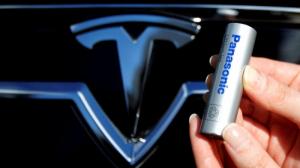Start of facility investment next year

Panasonic will participate in the production of electric vehicle (EV) batteries developed by Tesla. Tesla’s announcement of internalization of batteries has helped to dispel public concerns that the relationship between the two companies has not been able to move. However, other battery partners such as LG Energy Solutions and Chinese CATL are expected to participate in the production of new batteries. Competition is expected to remain due to diversification of battery procurement sources.
According to Japanese media such as Daily Industry Newspaper and Nippon Geizai on the 28th, Panasonic will build a pilot line for the production of Tesla 46800 standard cylindrical batteries (diameter 46mm, height 80mm) through facility investment next year. First, the facility will be introduced at the Suminoe plant in Osaka, Japan.
The investment is expected to be around tens of billions of yen. Previously, orders from domestic battery equipment partners participating in the battery production line of Tesla’s Fremont plant in California are estimated to be around 200 billion won. Panasonic seems to be on a similar scale.
Until now, Panasonic has established itself as a major battery maker in Tesla. However, the situation has changed with the launch of LG Energy Solutions from the end of last year and the new participation of Chinese CATL. As Tesla officialized its own battery production through the September’Battery Day’ event, there was growing concern that the battery supply could decrease. We reaffirmed our will to continue cooperation by participating in the production of Tesla’s new battery.
For Tesla, it is necessary to cooperate with Panasonic, the largest battery procurement source. This is because Panasonic accounts for more than 80% of the target of 100 gigawatt hours (GWh) of battery production in 2022, including plants in Berlin and Texas. In order to increase battery production to 3 terawatt hours (TWh, 3000 GWh) in 2030, participation from partners is essential. It is not possible to prepare batteries to be mounted in electric vehicles only by own production.
Panasonic made a surplus for the first time in the Tesla battery business in the third quarter of 2020 (fiscal year, October-December, 2019). It is meaningful in that it achieved results in 10 years. Considering the electric vehicle battery joint venture (Prime Planet Energy & Solutions) with Toyota, the Tesla battery business should make more money. Even if Tesla produces its own battery, it may have difficulty securing mass production for at least two to three years, so it is expected that Panasonic’s dependence will remain high until the next five years.
Kazuhiro Tsuga, CEO of Panasonic, said, “As the capacity of the prototype battery increases, the electrode structure becomes difficult.”
Copyright © The Elec, the electronic component specialty media Unauthorized reproduction and redistribution prohibited
